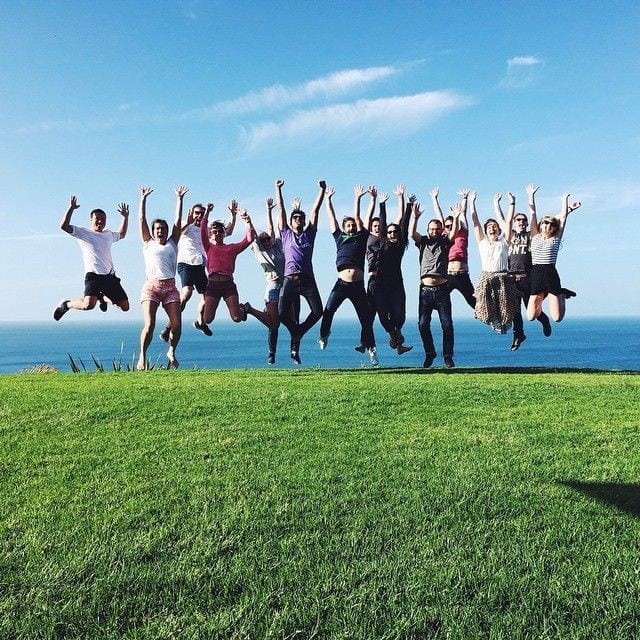This article got recently published in www.hrmguide.net, an international HRM portal under “Human Resources Management Articles”. View Link. Sharing the same here for our blog readers – Alok
“Teambuilding” is a much maligned word.
If you care to dig deeper, the reasons are quite apparent. “Once bitten is twice shy”, goes a popular saying. Rather than being a positively reinforcing experience – many people have unfortunately been left “scarred” by the experience! So much so, that they would prefer lazing about in a resort or playing cricket – rather than engaging in any “Teambuilding” workshop. So, from our experience, here are a few things that Teambuilding providers need to keep in mind:
1) Don’t be fuzzy on the Objectives:
For teambuilding providers and for the participants, the “Why” needs to be answered before the “How” is attempted. Why is the customer engaging a team building provider? Are there specific issues to be addressed? If you are able to answer this first question, every activity you then design into the workshop has a “purpose”. Without this, participants may have a great time doing an activity, but they would still be left with the question, “Why did we do this? How does this help make us a better team?” Without this “purpose”, team building providers run the risk of being seen as “Game masters”.
A good practice always is to meet up with the leader of the team, well before the session to clearly understand his expectations and stitch them into the activity debriefs.
2) Safety for participants is not a CHOICE:
We have unfortunately come across quite a few stories of teams who went for a team building workshop, returning with bruises & sometimes even a fracture! As a Facilitator for such programs, you need to remember that ensuring physical safety is your responsibility. It is ok to be perceived as paranoid about safety, rather than callous. Further, it may be true that participants caught up in the excitement of an activity may indulge in unsafe behavior. The right thing to do in such a situation is to immediately pause the activity and point out the unsafe behavior in a manner that is compassionate but firm. Remember: the buck stops with you.
Another much neglected aspect about safety is “emotional safety”. People are made to attend “Team building” programs to build positivity within the team. “Emotional Safety”in this context means, to ensure the participants are not exposed to any situation which makes them uncomfortable, exposed or insulted in front of others. How could this happen? This could happen because of any one of the variables – age, gender, physical fitness, and physical challenges or even because of a Facilitator trying to appear, “overly smart”! A good practice here is to know your audience and their demographics very well and choose activities in which you think every person would be completely comfortable.
What do we mean by the Facilitator trying to appear “overly smart”? Let me illustrate with an example we heard: A pharma team went to Goa for their annual offsite. One of the activities involved the whole team choosing one person to become a ‘Commando’ – who gets blindfolded. An obstacle course was set up in the conference room and 5 people took responsibility to help the commando in navigating the obstacles. Once the ‘Commando’ was blindfolded, all the obstacles were removed without her knowledge and she was still navigated around as planned. While for that one person it was an obstacle, for others it was anamusement. People ended up shooting her video on their cell phones while she was rolling on the floor on the instructions of the navigators. The activity ended after sometime with the ‘Commando’ opening her blindfold just to find everyone laughing out aloud at her. This was enough to get the poor girl into tears. Yes, maybe the activity did have a motive and some learning, but the fact that it was done at the cost of one participant breaking down and crying talks poorly about the person facilitating the session. Stay completely away from such cheapness!
3) A few participants sitting out is NOT OK:
By its very definition, a teambuilding program needs to ensure that every single person is participating actively. A large part of the responsibility for this lies with the Facilitator in designing suitable activities. Hence an activity like cricket which has a maximum of 14 people actively participating, while the rest are in passive mode, is a strict NO -NO. That holds true also for physically grueling activities like rappelling, mountain climbing – which will have large sections of the female gender standing by. Avoid any such activity where you think 100% participation is doubtful.
Participation also means the total involvement of leaders and seniors in the group. While most of the leaders we come across like to participate in the activities with the team, some choose to stand away. Strongly recommend leaders to participate. It gives the right message to the team. An actively participating leader brings in a lot of energy to the whole team, since people are enthused to see their leader in this different avatar. On the other hand, a leader who decides to stay back and not participate is giving the unsaid message that “I am above all this” – not a positive statement!
4) Forgetting that you are a Professional:
Team building programs, luckily for those in this profession, happen in the most exotic of locations. For the participants, the offsite is generally a once in a year outing – hence naturally, they are in a festive and vacation mood. But for us as Facilitators, it’s an occasion of work. As we say in Focus, “Making FUN happen is very serious business”.
What this means for a Facilitator is that, while participants can afford to completely let their hair down and lose themselves in the occasion – the same is not true for us as Facilitators. How you carry yourself both inside and outside of the workshop, makes an impression on how you are perceived by the customer. Ask yourself, would a customer ever engage again with a Facilitator who makes a scene of himself in a post-workshop party?
So there you go – those were are a few tips from our experience, that could help redeem “Team building”. Do share any thoughts that you have on this subject!







